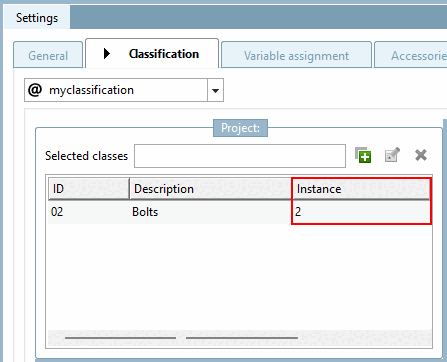After selecting the item <Create new class system...>, the Create class system dialog box opens. You can also open it at any time using ....
At first the base settings of the class system have to be defined:
The following tabbed pages will guide you through all setting options:
Basic settings [Base settings]:
Internal name: This name uniquely identifies the class system internally.
Visible name: Display name in all modules
Internal name and visible name [Visible name] can be identical.
Standard language [Default language]:
![[Important]](https://webapi.partcommunity.com/service/help/latest/pages/jp/ecatalogsolutions/doc/images/important.png)
Important All entries are made in the specified default language [Default language].[a]
Should it become necessary to make further entries in another language, the default language can be changed. However, this should only be performed, if the class system is currently completely translated. At a change a respective message is displayed.
[a] The CADENAS_LANGUAGE (i.e. the language displayed in the user interface) is not relevant when editing the class systems. The entire class tree is displayed in the default language [Default language].
Other languages [Additional languages]: Activate the checkbox for the desired translation languages.
Directories and files [Files and folders]:
Enter the big preview image for PARTdataManager (recommended dimension: 80x80 pixel):
Enter the little preview image for PARTdataManager (recommended dimension: 16x16 pixel):
Thumbnails of the classes [Thumbnails of classes]:
Use Browse to enter the default path to the directory of classification preview images:
Default path is: "$CADENAS_DATA/ datasetup/ classsystem/ my_class/ preview/ my_class".
If you do not want to insert your own preview images, you can optionally generate the classification preview images from the directory or project images.
In Developer mode (DEV), you will find the command Use view as classification image under PARTdataManager -> Classes tab page in the context menu of a directory or an individual class, you will find the Use view as classification image [Use view as classification picture] command.
Compare Section 5.8.2.1.15.4, “ Generate image data/preview images in batch run ”.
Now the respective classification preview images are displayed.
In the list field select the desired key mode.
If Show class ID [Show class id] is activated, the IDs are also displayed in the Edit class system dialog.
If the checkbox is activated, manual sorting is activated above the class selection.
Class systems can be hidden become. The settings for this are
$CADENAS_DATA/datasetup/classsystem.cfgin the file stored. Hidden class systems are displayed on the Classification tab page is no longer available for selection. If the class system is hidden, it is also displayed in the partial information omitted. This can be done via the checkbox Class System in Part Information show. [Show class system in part information]Through the two setting options Classes Hide [Classes hideable] and Characteristics Hide [Attributes hideable] can also be used hide individual elements individually. Are these settings actively you get an additional column with the Selection box to hide and edit in the class... [Edit class...] windows nor the Selection to hide. Linked variables that are hidden are
$CADENAS_DATA/datasetup/classsystem/"class system name"/"class system name"_ml_"language".csvin the file stored.
Class types [Types of classes]: Classes / Connection points [Connection points] / Classes and connection points
The selection under Class types [Types of classes] determines which options are available on the Classification dialog page in the pull-down menu under Filter.
Instance types [Types of instances]: Classes / Attachment points [Connection points] / Classes and attachment points [Classes and connection points]
The selection under Instance types [Types of instances] determines whether the Instance column on the Classification dialog page is editable or greyed out.
Example: In the plant manufacturing the use of instances would possibly make sense for pipe connections.
Once you have made all the settings on the dialog page, confirm with OK.


![Tab in the "Create class system [Create class system] " dialog box](https://webapi.partcommunity.com/service/help/latest/pages/jp/ecatalogsolutions/doc/resources/img/img_548ad633b7fb427e98359169bf8c513c.png)
![Basic settings" [Base settings] tab page](https://webapi.partcommunity.com/service/help/latest/pages/jp/ecatalogsolutions/doc/resources/img/img_75d25a684d24422192878cdac5f404df.png)

!["Directories and files [Files and folders] " tab page](https://webapi.partcommunity.com/service/help/latest/pages/jp/ecatalogsolutions/doc/resources/img/img_a34a13b3b390402484b8dd998761720c.png)


![[Note]](https://webapi.partcommunity.com/service/help/latest/pages/jp/ecatalogsolutions/doc/images/note.png)
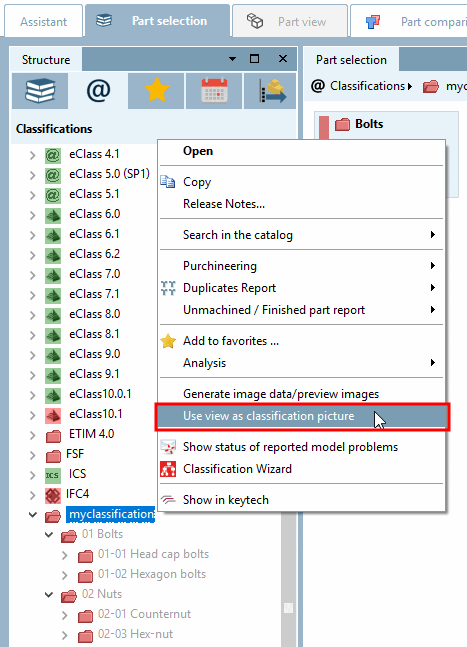
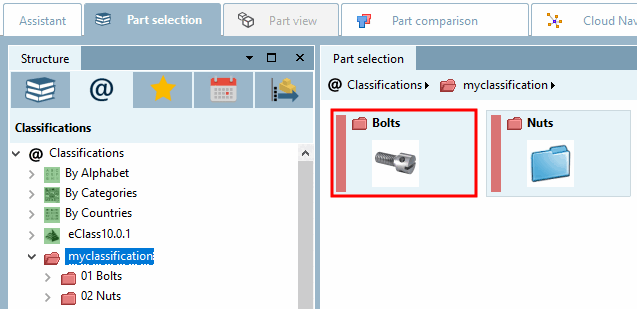

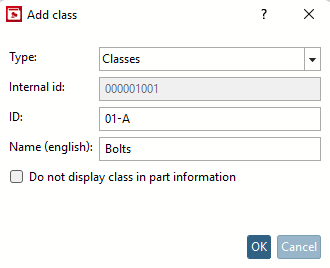
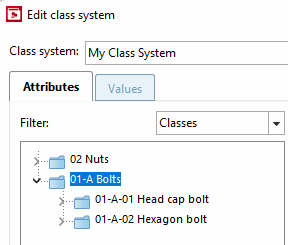
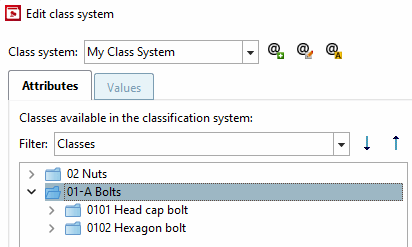
!["Show class ID [Show class id]" deactivated/activated](https://webapi.partcommunity.com/service/help/latest/pages/jp/ecatalogsolutions/doc/resources/img/img_8db37000d76f4699af7032a47854aa25.png)
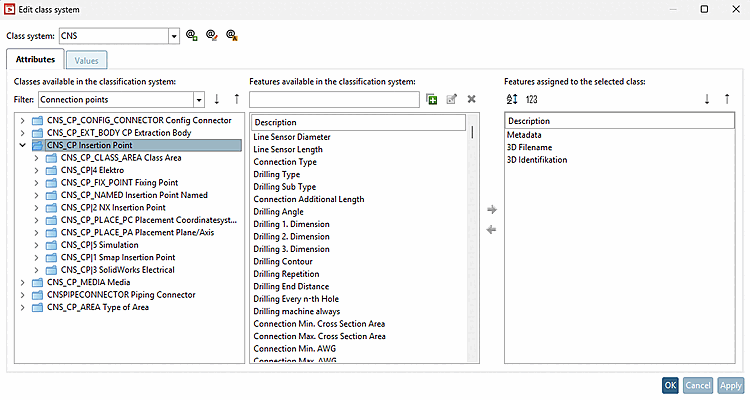
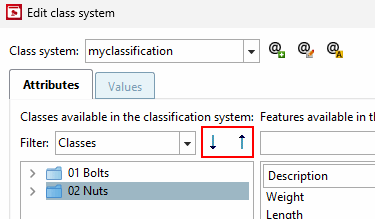
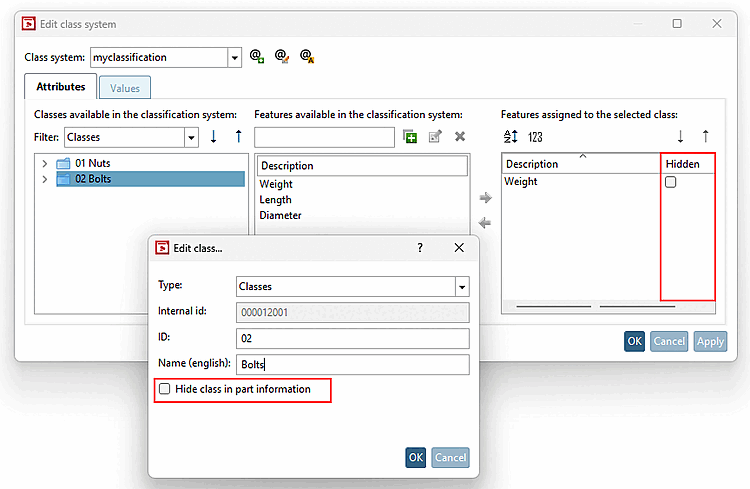
![Restrictions [Limits] " tab page](https://webapi.partcommunity.com/service/help/latest/pages/jp/ecatalogsolutions/doc/resources/img/img_6033ced59b5443f1a37f01573dcb5f18.png)
![Filter: Classes - Attachment points [Connection points]](https://webapi.partcommunity.com/service/help/latest/pages/jp/ecatalogsolutions/doc/resources/img/img_f792dbc98e90462d8457c020d0809656.png)
